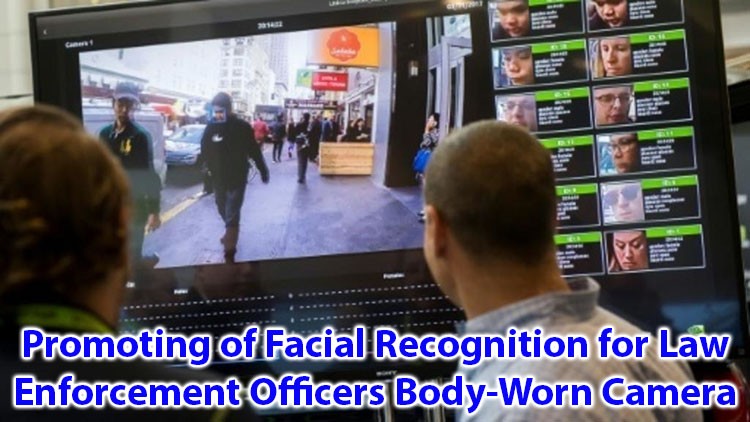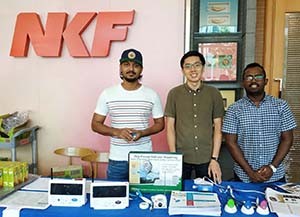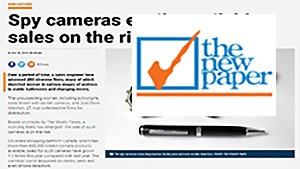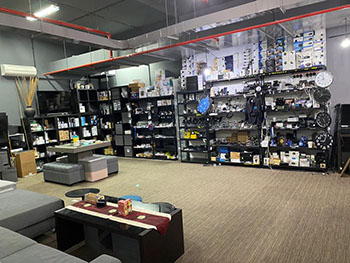Promoting of Facial Recognition For Law Enforcement Officers Body-Worn Camera
Facial recognition may change the security of our air terminals, working environments and homes, however, in law authorization, where one may hope to locate the most intense take-up of this new and ground-breaking innovation, it has not been going great. Allegations of incorrectness, unlawfulness, predisposition and ineffectualness have turned into the standard. In any case, the main problem is ‘deployability’: the AI motors controlling facial recognition arrangements should be prepared for this present reality. Furthermore, more critically, the wrappers around the use and systemizing of the innovation should be appropriately architected.
Facial recognition was at first intended for personality affirmation and access control, to work in controlled conditions and to affirm that an individual is who they guarantee to be. Presently cameras sweep swarms, contrasting each passing face with a watch list. This is of itself is tormented with trouble. In any case, when there is a match, what occurs straightaway? By what means would systems be able to represent information quality, natural conditions and scoring edges? In what capacity would users be able to move the concentration from innovation to results?
With mass appropriation now in transit, there may very well be sufficient footing to determine these difficulties. Police powers are effectively trying facial recognition, working out use cases. There is still a lot of work to be done, yet the response to that ‘deployability’ challenge could be, truly, directly before them.
Moving Forwards:
A week ago the news that the FBI has been trying Amazon’s facial recognition was met with unsurprising degrees of horror from a security hall that has chosen facial recognition in law requirement is terrible. Enough said. As it occurs, the model referred to by the FBI for where the innovation could have been utilized was just about the least quarrelsome one conceivable: filtering a huge number of long periods of recorded video for sightings of Vegas shooter, Stephen Paddock. “We had operators and experts, eight for every move, working all day, every day for three weeks experiencing the recording,” FBI Deputy Assistant Director Christine Halvorsen told an AWS gathering in November.
Albeit numerous law authorization organizations utilize facial recognition to dissect recorded video film, sparing time and exertion, it is a lot harder to use continuously, in reality. The arithmetic of checking each bystander in a packed open space against even little watch records pushes facial recognition as far as possible. Just the absolute best frameworks can adapt. Thus, there is still surprisingly minimal live facial recognition utilized in standard policing. In any case, that is going to change.
One power testing the alternatives for constant facial recognition is the Metropolitan Police in London. Official Cressida Dick said a year ago that facial recognition “is improving and better and better constantly… I figure the open would anticipate that we should consider how we can utilize this innovation and seeing whether it is powerful and productive for us.” But, in December, when the Met Police stopped an observation van in the city’s Soho region with a home of rooftop-mounted cameras to check Christmas swarms against a watch rundown of needed crooks, it provoked a distinct reaction from security campaigners. The chief of Big Brother Watch called it “a horrible misuse of police time and open cash” and said that “it is well late that police drop this perilous and uncivilized innovation.”
Perceiving the questionable angles to the innovation, the Met Police has clarified its astuteness to lock-in. Ivan Balhatchet, the Met’s key lead for live facial recognition, said in an announcement in December that “we keep on drawing in with a wide range of partners, some who effectively challenge our utilization of this innovation; so as to indicate straightforwardness and proceed with useful discussion, we have welcomed people and gatherings with differing sees on our utilization of facial recognition innovation to this arrangement.”
Going Mobile:
Rather than facial recognition, bodycams have just observed mass appropriation. These body-worn video gadgets now embellish police garbs around the world, giving proof administration, official wellbeing and open consolation. Bodycams record film for offloading into physical or cloud-based stockpiling frameworks. Some bodycams additionally live stream video back to control rooms. Others connect to weapon holsters to consequently trigger video recording. As cell phones advance, the more up to date models of bodycams that depend on cell phone stages are set to turn out to be all the more dominant. This implies the two advancements will meet. Facial recognition on bodycams is a conspicuous following stage. Enabling officials with watch arrangements of needed hoodlums, people of enthusiasm, missing youngsters, defenseless grown-ups… The rundown goes on.
What’s more, it has just begun.
In December, while London discussed its green van, an alternate trial of facial recognition was occurring in a different universe ‘city’ a huge number of miles away. This test didn’t produce features. It was unpublicized. Its subtleties were undisclosed. Be that as it may, it is significantly more illustrative of how facial recognition will be sent in bleeding-edge policing. Likewise with London, the test took to city boulevards with a watch rundown of around 2,000 individuals. In any case, this test concentrated on ‘stop and search’, with facial recognition on bodycams, instead of CCTV or observation vans. The test included few officials wearing gadgets that worked continuously from a similar watch list. Inside an initial couple of hours, two captures were made after effective facial recognition matches from those bodycams. The suspects are presently being indicted.
Stop and search is of itself disputable. Such powers go to the core of policing by assent, bringing up issues about profiling and inclination and avocation. In spite of the analysis, it tends to be colossally powerful, taking weapons from the road and capturing those under lock and key. Character affirmation is a key piece of the strategy. As is focusing on those to be halted. Bodycams with facial recognition guarantee personalities are caught and checked precisely, all as per enactment and approach. Known guilty parties, people of intrigue – regardless of whether distinguished or not,
defenseless minors and grown-ups, all can be recognized all things considered. As a guide to knowledge drove cutting edge policing it offers genuine advantages. The captures referenced above were just made conceivable by such strategies. In this case, it brought about a procedure to convey the bodycams over the city. The outcomes were incontestable.
Setting Boundaries:
The utilization of facial recognition on bodycams additionally offers resistance against allegations of racial predisposition. Approaches can be set to avert officials looking those not recognized by facial recognition, notwithstanding when halted. Where the allegation is made that stop and search over-polices low-level wrongdoing in explicit networks, facial recognition on bodycams offers an equalization. It is this sort of shielding that will help brief more extensive appropriation.
Facial recognition on bodycams will likewise give auxiliary confirmation to matches from observation vehicles and CCTV cameras. Following an underlying match, an official by walking approaches the individual and runs a second check from a bodycam, running from precisely the same watch list. Just if there is likewise a match is anything taken further. In of itself, this is a material defend against supposed false positives. It additionally gives an individual to the individual association before any ultimate conclusion on capture is made.
Edge Artificial Intelligence At Work:
It is this systemizing of facial recognition that we will see straightaway. The linkage of various cameras to a similar watch records, and to one another. Moving handling to cell phones opens up the more extensive advantages of edge-knowledge. Simulated intelligence on cell phones that can connect to one another just as to a focal center point. The capacity to keep running from various, fragmented, and synchronized watch records. All live and continuously.
In the event that there is an occurrence, as the knowledge picture changes, all cameras – including bodycams – are ceaselessly refreshed. The optional advantage of this is the possibility to utilize edge-wise bodycams to give an underlying match, basically narrowing down the bundle, with the match at that point sent to a focal cloud-based framework utilizing a similar AI motor, or an alternate AI motor, or even numerous AI motors, to give a substantially more exact channel before any ‘coordinate’ is exhibited to an administrator. The majority of that would occur in a couple of seconds.
The outcomes would be close to 100% impeccable.
This Is The Year:
This ought to be the year when facial recognition shakes the allegations of inalienable inclination and error. It ought to be the year when there is an affirmation that not all facial recognition advancements are the equivalent. Various instruments ought to be obtained for various purposes. Also, the sterile evaluation of such motors in controlled conditions should offer an approach to genuine client references and confirmation of results.
The original of bodycams in activity today has concentrated on account video for proof administration frameworks. Presently, Bodycam 2.0 will move the concentration to live video spilling, facial recognition and on-gadget Edge-AI. This up and coming age of IoT bodycams will join the billions of other IoT gadgets that will be sent on 4G and 5G arranges over the coming years. Intended to be arranged, to share information, to part handling from edge to focus, these gadgets will advance away from ‘in the event of some unforeseen issue’ video recording towards a basic policing device. At last, intermingling will see the kinds of bodycam being used today transform into ruggedized, enormous screen cell phones that will consolidate a catch and spilling ability with edge AI examination and rich information introduction to the cutting edge official. The period of the single-reason record-just camera is arriving at an end.
For facial recognition, the discussion and contention in 2019 ought to be around the totally unregulated employments of the ability for promoting and business security. Simulated intelligence in silicon inserted in modest IP cameras, available to all. I have expounded before on the worries we ought to have at the idea of business undertakings, schools, colleges, possibly neighborhood watch plans arranging their very own watch arrangements of people of intrigue, in light of caught or opensource databases. The utilization of this innovation in law authorization will stop to be so polarizing.
Thus, to the extent policing is concerned, 2019 will be set apart as a defining moment for facial recognition. Tests will transform into organizations. Arrangements will yield results. The contentions will be won. Most of the general society, at last, will decide on close to home security and wellbeing over discretionary protection. In the wake of numerous calls for limitations and guidelines, a review distributed for the current week found that solitary 18% of Americans accept facial recognition ought to be carefully constrained to the detriment of open security. Also, this is the place bodycams will make their mark. On the off chance that we could prepare our cops to perceive each known guilty party, each unidentified individual of intrigue, each helpless grown-up or missing kid, to a 99% or more noteworthy degree of precision, at that point, we would. All things considered, presently we can.









